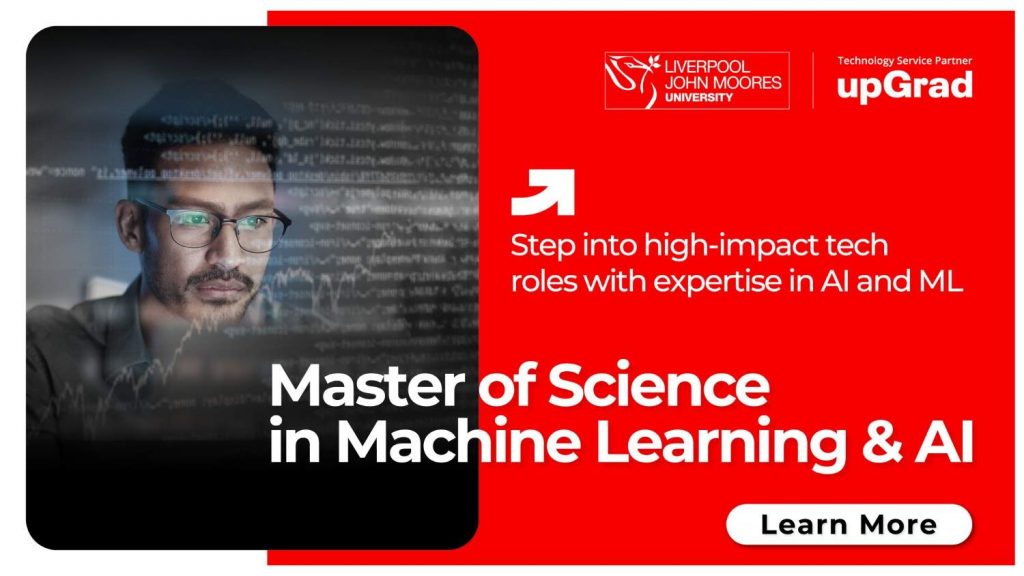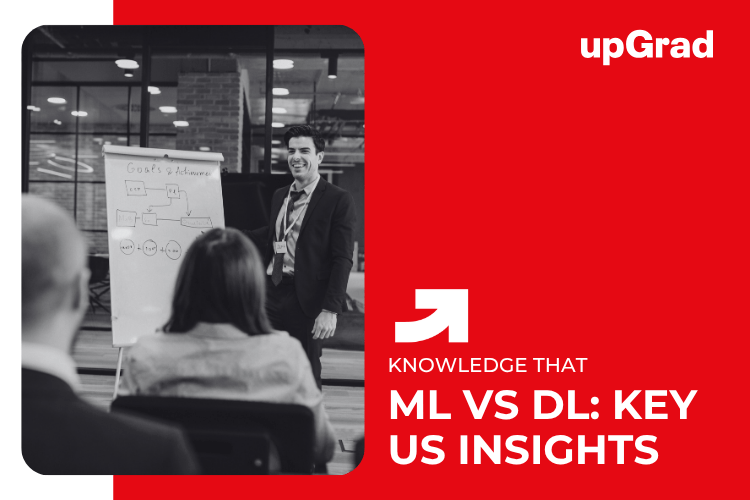Have you heard about the machine learning vs deep learning debate? If you’re a professional in the U.S., these are two AI technologies that you need to examine closely and understand the differences. Artificial intelligence is witnessing rapid adoption throughout the country, and this is where there is a need to understand terms like Deep Learning and Machine Learning, which professionals use in the space.
Approximately 42% of U.S. enterprise businesses currently use AI, and 40% are seriously considering its adoption. Reports also indicate that 99% of Fortune 500 companies are heavily leveraging AI for various tasks.
Take your skills to the next level — Explore AI & ML Online Course
Machine Learning vs. Deep Learning: Key Differences U.S. Professionals Should Know
Here is a closer look at the main difference between machine learning and deep learning.
| Aspect | ML (Machine Learning) | DL (Deep Learning) |
| Definition | AI subset that learns from data | ML subset that uses neural networks |
| Human Intervention | Requires feature engineering | Learns the features automatically |
| Data Requirement | Functions with smaller datasets | Needs bigger datasets |
| Applications | Recommendation systems and fraud detection | NLP, image recognition, and autonomous systems |
| Processing Power | Can run on CPUs | Needs GPUs for training |
Here are some insights on the ML and DL difference, considering both as subsets of AI (artificial intelligence).
What is Machine Learning?
Machine learning is a process where computers learn from existing data, unlike traditional programming, which relies on fixed rules. The system improves on its own by accessing data. In the supervised learning model, the computer accesses data that is labeled. Unsupervised learning uses data without labels. Reinforcement learning is a trial-and-error learning method..
Also read: Machine Learning Basics
What is Deep Learning?
Deep learning is a subset of machine learning that utilizes algorithms or neural networks in a manner mimicking the human brain. Data undergoes multiple layers of processing, with every layer learning new things.
Neural networks comprise various nodes linked like neurons in the brain. The higher the number of layers, the deeper the network. Thus, they enable systems to handle complex tasks conveniently.
Also read: Understanding Deep Learning and Its Applications
Choosing Between ML and DL for Business Applications
What is the ML and DL difference for business applications? The former is more helpful in extracting knowledge from data via decision trees, linear regression, and simpler methods. On the other hand, the latter employs advanced methods typically found in artificial neural networks.
Deep learning needs less human intervention since the dataset features are automatically extracted. At the same time, machine learning techniques require engineers to manually identify features and classifiers in data before adjusting the algorithms.
Some examples of machine learning applications include fraud detection, email spam detection, predictive analytics in marketing, and recommendation systems. Deep learning applications include Google Assistants and other voice assistants, self-driving cars, face recognition in smartphones, and medical image analysis.

Tools & Frameworks for ML and DL
Machine learning and deep learning leverage several tools and frameworks to create, train, and deploy models. Machine learning depends on PyTorch, TensorFlow, and scikit-learn, while deep learning also uses PyTorch and TensorFlow. Spark ML is part of the Apache Spark ecosystem and a key machine learning framework. Some other deep learning frameworks include Caffe, Keras, Theano, and MXNet.
Future Trends in ML and DL
Some future trends in ML and DL include Explainable AI (XAI), where these models will be transparent, enabling users to see the process behind decision-making. Other trends include Edge AI, Federated Learning, Generative AI, AutoML, and multimodal learning. There will also be innovations in quantum computing and AI agents, driving progress in transportation, finance, healthcare, and more.
Also Read: XGBoost vs LightGBM: Key Differences, Pros & Cons
Real-World Applications: Where Machine Learning and Deep Learning Are Used in the U.S.
Here are some examples of applications using machine learning and deep learning.
Healthcare
- ML: Predictive diagnostics, patient risk analysis, and fraud detection in billing.
- DL: Medical imaging (X-rays, CT, MRI), personalized treatments, and genomic data analysis.
Finance
- ML: Fraud detection in transactions and loan applications; anomaly detection.
- DL: Algorithmic trading, credit scoring, and market trend analysis.
Retail
- ML: Product recommendations, dynamic pricing, and competitor price analysis.
- DL: Image recognition, visual search, inventory automation, and AI chatbots.
Transportation
- ML: Route optimization and predictive maintenance for vehicles and infrastructure.
- DL: Autonomous driving, traffic flow analysis, and real-time traffic management.
Also Read: Machine Learning Interview Questions & Answers for US-Based Jobs
Advance Your AI Career with upGrad
upGrad is the best place to find cutting-edge AI and ML programs tailored for professionals in the US. You can expect advanced certifications for working professionals, along with industry-relevant curricula, guidance and mentorship, career support, and flexible online programs. Learn from the best universities and access real-world case studies and projects.
You will discover multiple programs from upGrad that help you build a fulfilling career in the US. Some of them include:
🎓 Explore Our Top-Rated Courses in United States
Take the next step in your career with industry-relevant online courses designed for working professionals in the United States.
FAQs on Machine Learning vs Deep Learning
The difference lies in the way they extract features from data. Machine learning needs manual feature extraction, where human beings define the features to be used by the model. Deep learning automatically learns features from the data with algorithms like neural networks.
You will benefit from a strong foundation in mathematics, statistics, and related aspects. It helps troubleshoot problems with algorithms and models. NLP, deep learning, and reinforcement learning also need mathematical knowledge.
Some of the key resources include TensorFlow, Scikit-learn, PyTorch, NumPy, Pandas, and Python Programming. Other resources include online courses on generative AI, deep learning, neural networks, and machine learning algorithms.
No, you cannot say that deep learning is better for all AI-related tasks. Deep learning is for complex activities with unstructured data. On the other hand, machine learning is a helpful tool for well-defined and simpler programs with limited data.
Some of the core programming languages used for machine learning (ML) and deep learning (DL) include PyTorch, Python, JavaScript, Java, C++, TensorFlow, and R. Python is the most popular choice in this space.








